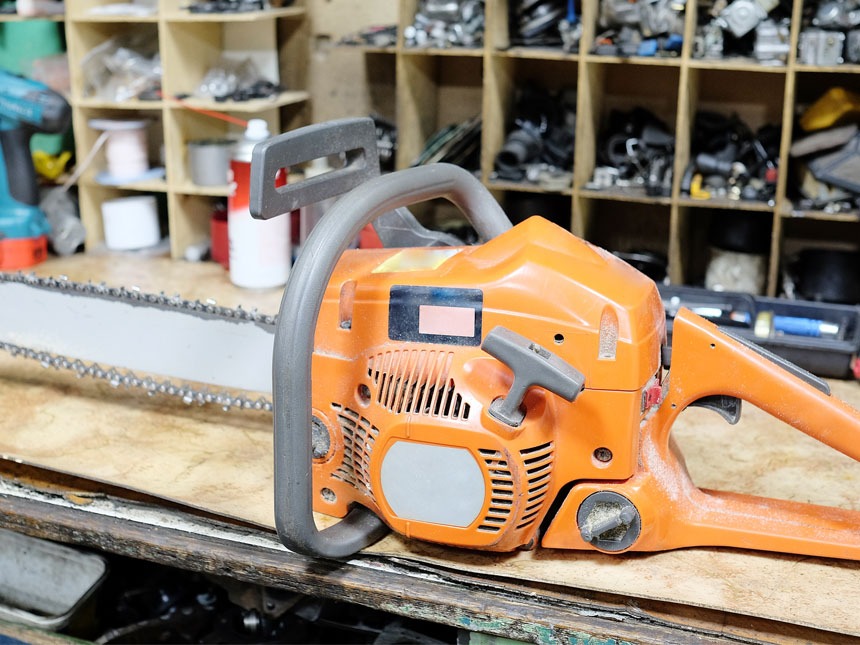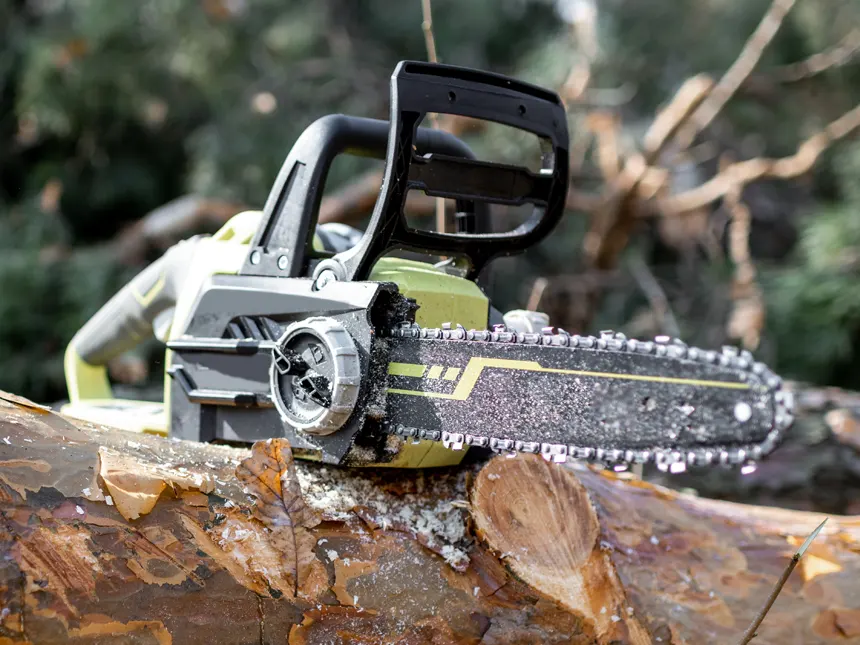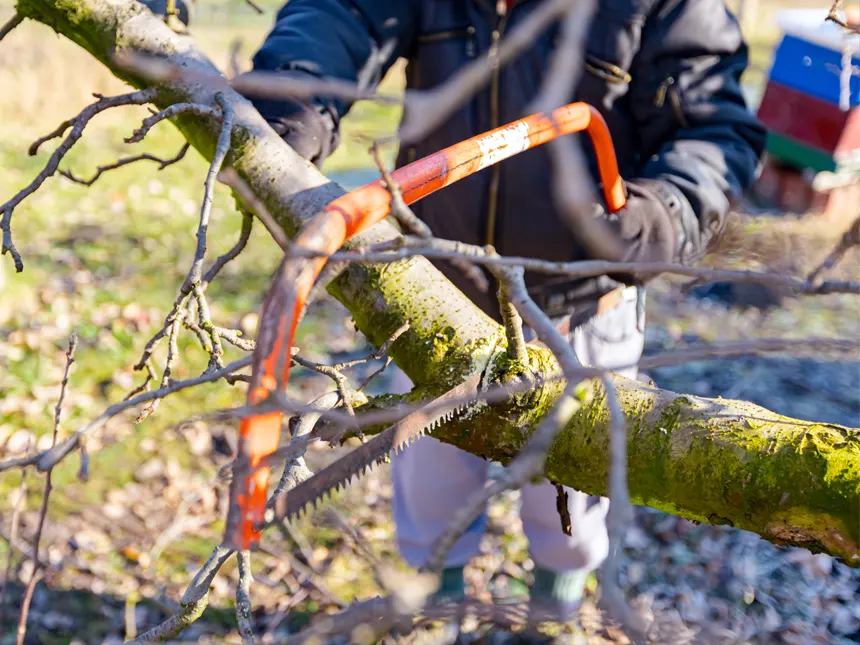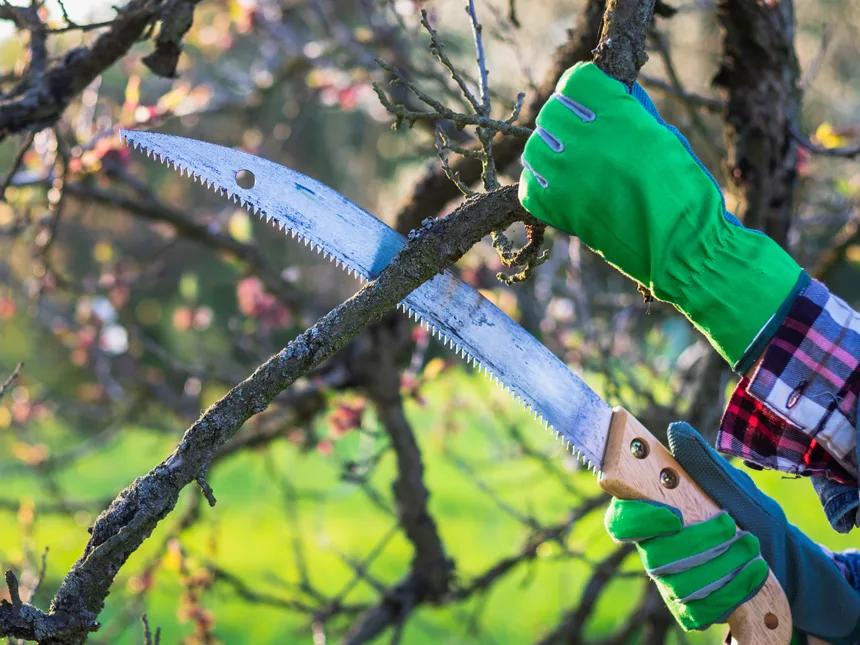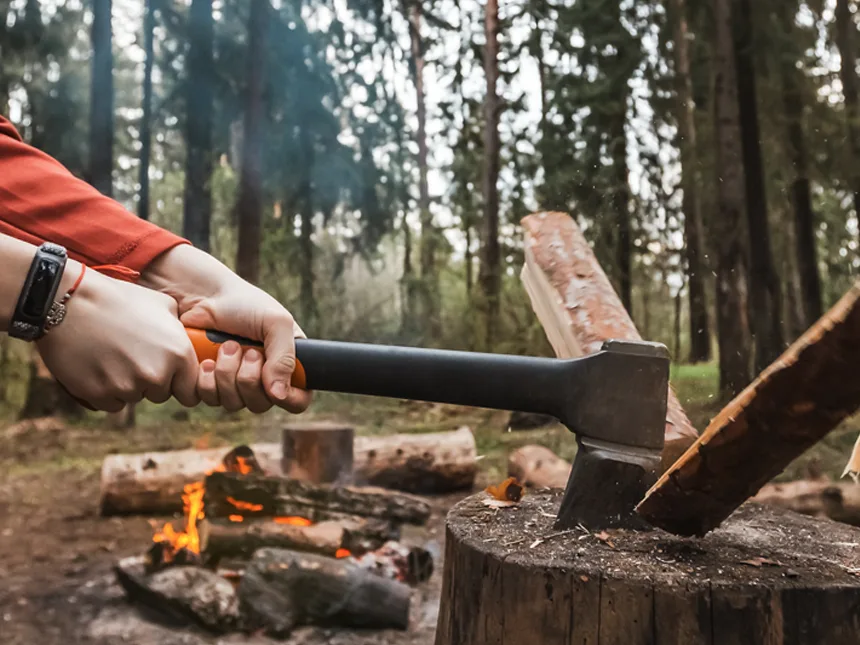Best Axe Sharpeners: 4 Great Sharpening Tools
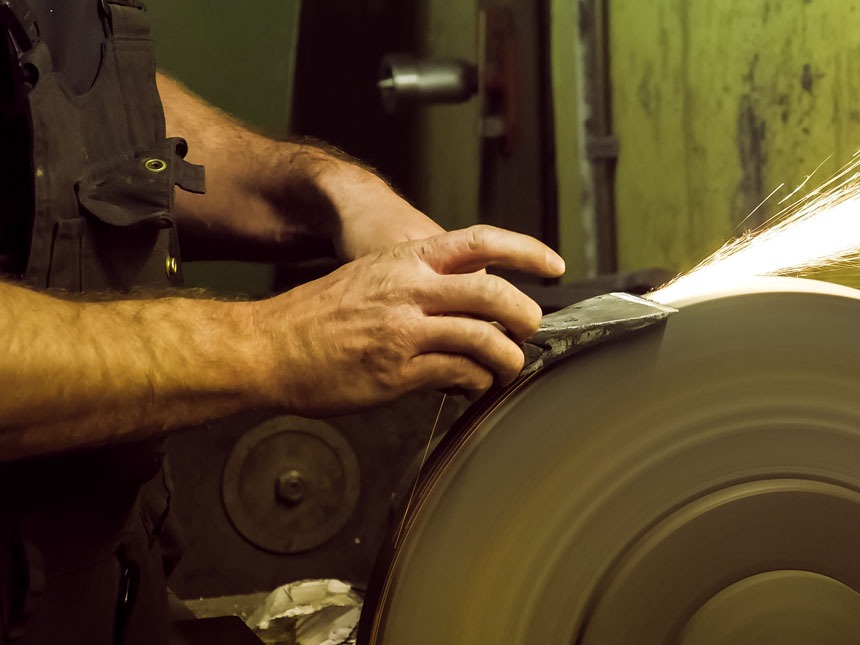
Timber Gadgets is reader-supported. We may earn a commission if you buy through the links on our site.
Once you have your axes, it’s important to maintain them using axe sharpeners. This extends the lifespan of your axe and ensures it’s working as efficiently as possible. Dull axes can be both inconvenient and dangerous. To avoid potential hazards and get your axe back in working condition, employ the axe sharpener that works best for you.
There are three primary types of axe sharpeners: stone, file, and electric. Our best picks for the best axe sharpeners are the Lansky Puck for stone sharpeners, the Nicholson Axe File for file sharpeners, Dremel 3000 rotary kit for Dremel electric sharpeners, and DEWALT DW758 for bench grinders.
Keep reading to learn more about these three sharpeners and our top picks for the best axe sharpeners on the market. Listed in the table below are the tools I’ll cover in this buyer’s guide.
| Tool | Type |
|---|---|
| Lansky Puck | Whetstone |
| Crescent Nicholson Axe File | File |
| Dremel 3000 Variable Speed Kit | Dremel |
| DeWALT DW756 | Bench Grinder |
Table of Contents
Which Type of Sharpener Is Best For You?
Which axe sharpener is best for you depends on several factors, including how of
Different Types Of Axe Sharpeners
There are three primary types of axe sharpeners: stone, file, and electric sharpeners. Each type has a specific sharpening method and its own pros and cons. All three types are effective and will easily sharpen your axe.
Stone sharpeners are arguably the most versatile, but many consider file and electric sharpeners more efficient. And while stone and file sharpeners are more affordable, electric sharpeners require the least amount of user effort.
Stone Sharpeners
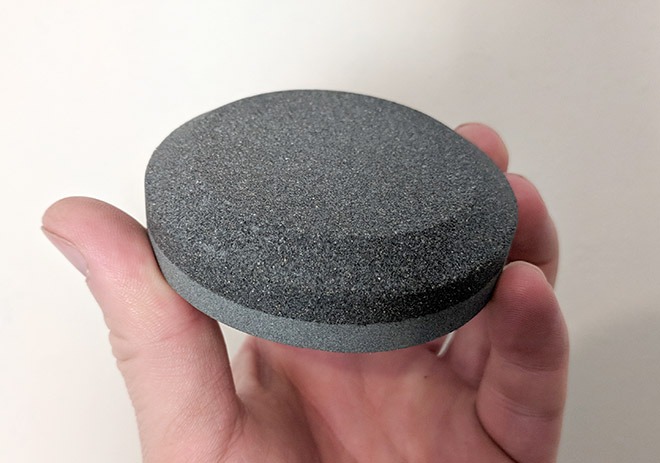
Also known as whetstones or sharpening pucks, stone sharpeners are useful for axes with all types of edges. Whether you have a dull edge or one that’s already sharp, you can use a whetstone to shape it into premium condition. The condition of your axe will determine which category of stone you need.
There are three categories of stone sharpeners:
- > 1,000 Grit – These stones are coarse and used to sharpen chipped and rusty axes.
- 1,000 – 3,000 Grit – These sharpeners are more fine and used to sharpen dull axe edges.
- 4,000 – 8,000 Grit – These stones are used to smooth sharpened axes and refine edges.
As an added convenience, there are many stone sharpeners that are dual-sided. Typically, these either have 1,000-grit on one side and 3,000 on the other or are equipped with 3,000-grit and 8,000-grit sides. The latter is often referred to as a finishing stone rather than a sharpening stone.
If you’re into DIY or stuck in a less-than-ideal situation, you can fashion your own whetstone by sourcing natural stones. River stones, granite, quartz, and sandstone are four examples of stones you can use that are commonly found in a wide variety of environments.
For larger stones, you can leave them on the ground and grind your axe’s edge against them. For smaller stones, you can hold them in your hands and grind them against the axe.
You’ll need to use a honing oil or water along with the whetstone when sharpening your axe.
File Sharpeners
File sharpeners are long and thin, typically between 8 – 12 inches, with a handle or grip on one end and abrasive strips with densely set ‘teeth’ on the other. They are useful for sharpening dull, rusty, or scored axe heads and bits.
Most files have two different levels of abrasiveness: one side of the file is coarse, while the other is fine. Though this isn’t always true (both sides could be coarse or fine), it’s how most traditional files are built.
Files are designed to sharpen in one direction. Usually, that direction is pushing away from you, with the handle on the end nearest to you.
If you choose a file sharpener, the best one is a bastard mil file. These are specifically made for sharpening axe blades and, as such, as easier and more effective to use.
Before you begin using your file sharpener, think about whether you want a rounded bevel edge or a straight edge:
- Rounded bevel edges are slightly curved and provide more support for the cutting edge, making them perfect for cutting and chopping wood.
- Straight edges feature completely flat sides, like a triangle, and are better suited to carving and detail work.
When you use a file sharpener, you can either hold the axe in your hands or use equipment, such as a bench vise, which will secure the axe for you. Alternatively, you can also use C-clamps.
Either way, consider investing in non-marring vice jaws if you’re going to use the equipment. These protect the handle of your axe from the vice or clamps, preventing accidental damage.
Electric Sharpeners
Electric axe sharpeners are motorized equipment powered by electricity. To use an electric sharpener, you have to plug it in and turn it on. There are a variety of different electric sharpeners that range in size, weight, and power.
Just like stone and file sharpeners, the belts on electric sharpeners come in different grain sizes:
- Coarse sizes like 120 and 220
- Medium grain sizes like 1,000 and 3,000
- Fine-grain belts like 3,000 and 6,000
Many electric sharpeners also have the option of adjusting the angles between 15 and 30 degrees, removing the need for manual adjustment and any guesswork. This feature allows for better accuracy when sharpening and, as a result, a better blade.
Electric sharpeners are the quickest in terms of sharpening axes, simply because a machine works more efficiently than a person can. For each gram of metal that you can take off using a stone or file sharpener, electric sharpeners can take off double (or more).
But this can be a drawback as much as a benefit and many users report that you sacrifice precision for speed. There is less control over the sharpening process when you use an electric sharpener, and it’s easy to accidentally take too much off one side (which then results in you need to compensate for this on the other side).
Bench grinders, belt sanders, and Dremel tools are three of the most common types of electric axe sharpeners.
If you need a very precise edge, it may be wise to start with an electric sharpener and then finish off using a fine-grain whetstone.
Lansky Puck Dual Grit Multi-Purpose Blade & Tool Sharpener

The Lansky Puck Whetstone is our choice for the best stone sharpener and the most versatile sharpener. It’s effective, easy to carry and handle, and can sharpen a variety of blades besides axes.
This whetstone features an easy-to-grip contoured shape with a dual-grit design, with a coarse 120 grit for quick cutting and a medium 280 grit for shaping and sharpening. In addition to sharpening your axes, you can also use it on lawnmower blades, hatchets, shovels, and more.
It’s approximately 9.5” L x 5” W x 1.13” H and roughly 0.5 Ibs (0.22 kg). This makes it the perfect sharpener for in-home use and during traveling.
People are most impressed with its portability, versatility, ease of use, and value for money.
Crescent Nicholson Rectangular Double/Single Cut Axe File
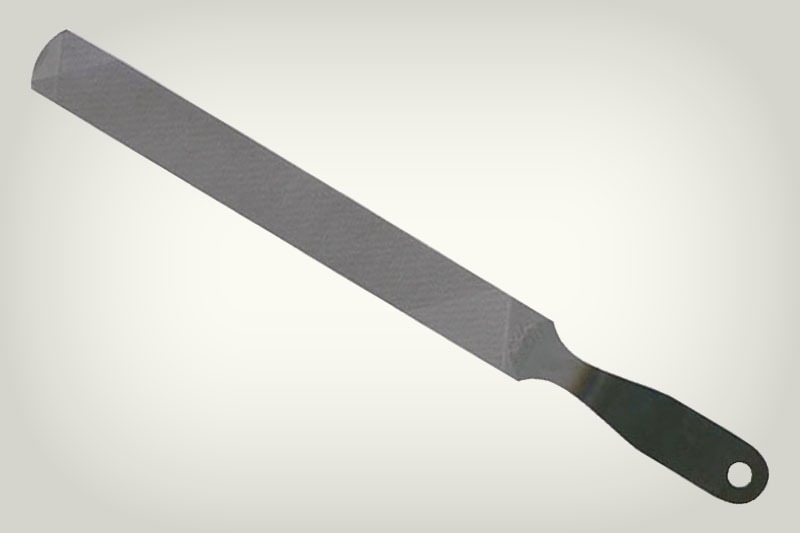
The Crescent Nicholson Axe File is an American pattern, dual-sided file. It features a double-cut with rough filing on one side for serious sharpening and s single-cut with a finer grit on the other side for finishing. And the rectangular shape provides extended surface area for faster sharpening.
It’s approximately 13” x 2” x 0.25” with an 8” filing blade, giving users a comfortable 5” handle. At 0.4 Ibs (0.18 kg), it’s easy to hold and maneuver while in use. Two safety edges also reduce the risk of sharpening your axe in a confined area.
People are particularly struck by its durability, easy handling, and value for money.
Dremel 3000 Variable Speed Rotary Tool Kit
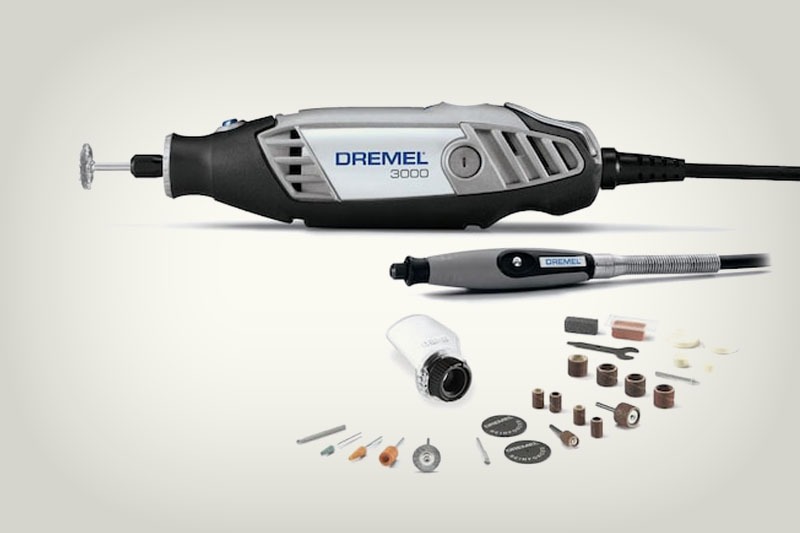
The Dremel 3000 rotary tool kit combines speed, versatility, and precision in one easy package. It has a 1.2 amp motor with six variable speeds that run from 5,000 up to 35,000 RPM. Over 20 accessories allow for precision control, while the 360-degree grip and innovative ventilation create a safer, smoother sharpening process.
The 3000 series weighs 3.35 Ibs (1.5 kg) and is 11.5” x 3.13” x 8.25”. For users who need more versatility and power, the 4000 series (1.6 amps, variable speed) and 4300 series (1.8 amps, variable speed) are available.
DeWALT DW756 Bench Grinder
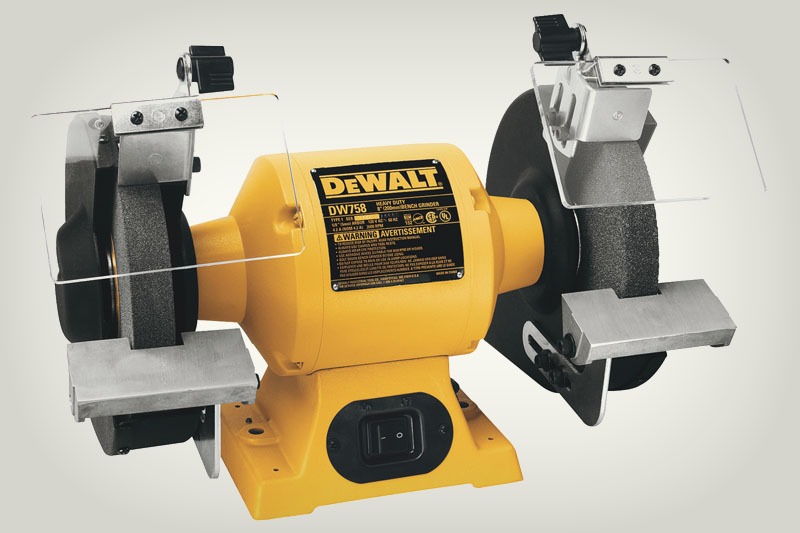
The DEWALT bench grinder is the best electric sharpener currently available. It comes with a 3/4-horsepower induction motor that can run up to 3,600 RPM, with a cast iron motor housing and base. The grinder has 36- and 60-grit wheels for both sharpening and refining. Additional features like rear exhaust ports and spark deflectors make the cutting process as safe as possible.
This grinder is compact, powerful, and easy to use, making it the perfect choice for those who exclusively need an axe sharpener and people with a variety of blades to maintain. There’s 12.5” between the wheels, providing users with the option of sharpening larger or longer tools.
It weighs just over 28 Ibs (12.7 kg) and is 17.75” x 12.63” x 10.75”.
People were most happy with the easy assembly and sturdiness.
Steps To Take Before Sharpening Your Axe
Prior to starting the axe sharpening, make sure the axe is steady and won’t slip out of your hands or pull the sharpener out of your hands. You can place the axe on a flat surface, clamp it in a vice, hold it upright, or brace it over your lap.
You should also clean the axe head before you sharpen it to remove as much surface rust and dirt as possible. There are two ways to clean your axe:
- Buffing with steel wool
- Using an abrasive solution such as white vinegar or WD40
Steel wool requires more effort but cleans quickly; abrasive solutions have an easier application, but will take more time to work.
When using white vinegar, the method of least resistance is to detach the axe head and soak it overnight. Make sure the head is fully submerged; partial submersion will leave you with areas that are still dirty or rusty.
WD40 only needs roughly an hour or so to work. Spray or apply the WD40, making sure to cover the entirety of the axe head. After at least 60 minutes, remove the solution.
After you secure your axe and clean it, you’re ready to begin sharpening it using your preferred method.
Using Axe Sharpeners: What You Need To Know
How you use your axe sharpener will depend on the type of sharpener: stone, file, or electric. Each involves a difference process.
Safety is key when you’re sharpening axes. Always wear a pair of light gloves, safety goggles or glasses, and a dust mask or respirator. The level of protection you need will vary according to which axe sharpener you use, but generally electric sharpeners require the most protective gear.
When possible, always work in a ventilated space. The more air circulation you have, the better.
How To Use Stone Sharpeners
To use a stone sharpener, firmly grasp it in your hand and place the stone against the axe’s edge. The edges should be coated with either honing oil or water. Then, rub the stone in circular motions over the edge. Make sure to apply even pressure as you rub the circles, working your way from the left to right edge of the axe (or vice versa).
Switch axe sides periodically to ensure that both sides receive the same treatment and are equally sharpened. While sharpening, make sure to use the correct grit:
- Lower-grit whetstones, such as the coarse 1,000 grit option, are best if your axe is particularly rusty or scored
- Medium-grit whetstones, such as 3,000 grit, are best for dull axes
- Use a high-grit stone that’s 4,000+ for axes that only need minimal sharpening or refining
It’s possible that you may have created a ‘burr’ during this process, which is an overhang on the blade’s edge. If this happens, switch to a finer grit stone and work the edges and burr until it’s gone.
After you’re done with the sharpening stone, apply a thin layer of oil, beeswax, or a similar protective substance to the axe head and newly sharpened edges. This prevents moisture, dirt, and other corrosive materials from ruining your axe (at least for a short time).
How To Use File Sharpeners
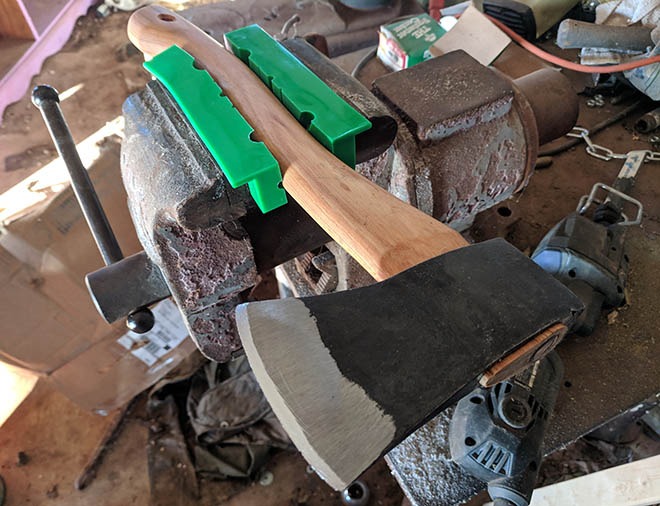
To use a file sharpener, set the sharpener against the blade and follow the curve. Most axes have a 20 – 30 degree bit angle that should be easy to follow unless you have a more steep bit angle or a warped axe head. Apply even pressure as you follow the curve, making sure to maintain this pressure with each stroke.
There are two ways to use a file sharpener:
- The push file method
- The draw method
You can either hold the file with one hand or both hands. If you hold it and stroke with one hand, that’s the push file method. This is the most commonly used method for file sharpening. It’s also fairly simple: you push the file away from you over the bit.
As you continuing doing this, each stroke removes bits of the metal and shapes the new, sharp edge. For more pressure, use your other hand (if it’s free) to press the file more firmly against the axe head as you push it.
The draw method is when you hold each end of the file in your hands, with the file tip in your dominant hand and the file handle in your non-dominant one. Using both hands, pull the file towards yourself, drawing it along the axe curve in a sweeping motion.
More pressure on the axe means you remove more metal, more quickly. As such, the draw method often results in a suitably sharp edge faster than the push method.
You should continue to file your axe until it’s sharp and free from scoring, such as chips or dents.
If your axe is especially rusty, you may have created a ‘burr.’ As mentioned earlier, this is easily removed using a stone sharpener.
How To Use Electric Sharpeners
To use an electric axe sharpener, simply plug in the tool and brace your axe against the belt as it moves. Prior to turning on the sharpener, make sure the belt is the correct grit size and adjust the angle if necessary.
Much like stone sharpeners, each grit type is best suited for axes in a specific condition:
- Coarse grain belts are best for axes in dire need of help (chipped, scored, rusted, etc.)
- Medium grain belts work well for axes that are dull, but not in poor condition
- Fine-grain belts are intended for axes that are fairly sharp, but just need that extra edge (pun intended)
With electric sharpeners, more is less— i.e., you don’t need to exert as much pressure as you would with a whetstone or file sharpener. Electric sharpeners are already prone to taking off more metal per pass, so too much pressure may drastically speed up this process and take off more than is needed.
And because tools like bench grinders and belt sanders are so powerful, it’s important to keep a very firm grip on your axe. Make sure you have your axe securely in hand before you start sharpening. Similarly, make sure your electric sharpener is securely fastened to a surface prior to turning it on.
Always read the instructions before you begin using an electric tool, even if you’ve used this type of sharpener before. And with electric sharpeners, eye protection is vital in case the sharpening causes sparks.
It’s also a good idea to have a bucket of water nearby in case you need to cool the axe head down quickly.
Final Thoughts: The Best Axe Sharpeners For You
If you’re looking for a portable, versatile sharpener and don’t mind putting in some elbow work, then stone sharpeners like the Lansky Puck are perfect for you.
For axe owners who value efficiency and precision, file sharpeners like the Nicholson axe file are the best fit. And for those who want an effective cut quickly, electric sharpeners like the Dremel 3000 rotary kit and DEWALT bench grinder are great choices.

